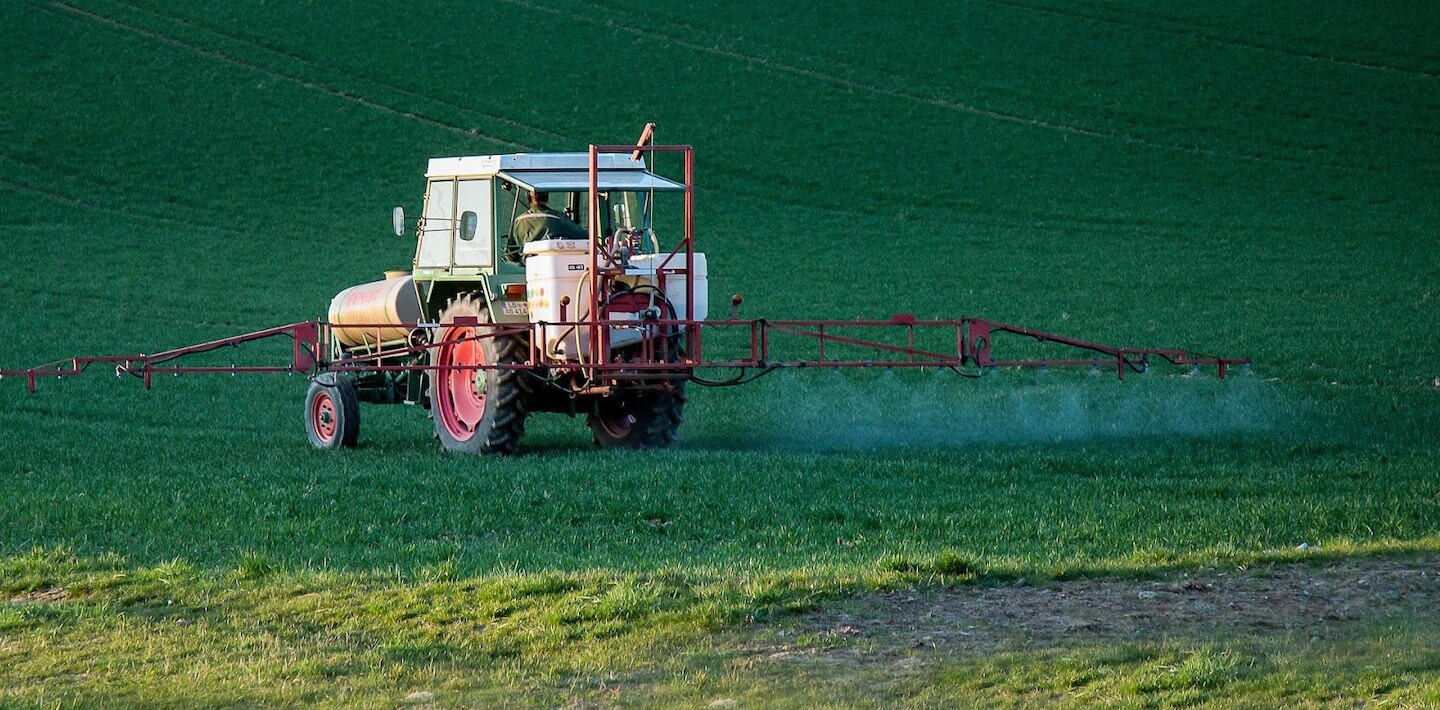Although glyphosate is not as persistent as other pollutants, the extensive use of glyphosate-based herbicides has led to widespread pollution and its residues are now detected in soils, sediments, surface waters and the atmosphere.
Glyphosate contamination in soil primarily occurs through the direct application of glyphosate-based herbicides in agricultural fields. The active substance can bind to soil particles, leading to the accumulation of residues over time and persistence in the soil. This can have adverse effects on soil microbial communities, and some earthworms, leading to decreased soil health and fertility.
Agricultural use of glyphosate-based herbicides can result in contamination of water bodies, such as rivers and lakes, through atmospheric drift, as well as leaching or surface runoff after rainfall events. Due to its extensive use, glyphosate has become a ubiquitous contaminant in aquatic ecosystems, globally, both in surface waters and groundwaters. This is of major concern as the substance can cause chronic toxicity in aquatic species (ECHA, 2022).
While research on atmospheric concentrations of glyphosate and AMPA is limited, evidence indicates their presence in ambient air and air particles. This is attributed to atmospheric drift during spraying or wind erosion of contaminated plants, soils and sediments. Moreover, glyphosate can bind to dust particles and drift away from application sites, through the air. As a result, non-target species, including humans, close or distant from treated locations, may also be exposed to glyphosate residues via the ambient air.
Resources
Articles:
PAN EUROPE (2017) : Press Release: New Study: Glyphosate persists! And European top soils are contaminated with it.
Ecologistas en Acción (2021) : El glifosato contamina las aguas superficiales y subterráneas
Reuteurs (2011), by Carey Gillam : U.S. researchers find Roundup chemical in water, air
Phys.org (2021) : No to the re-approval of glyphosate – Large aerial dispersal confirmed. Article on a new scientific review, showing ubiquity of glyphosate in the air in Germany
Politico (2019) : Concerns over glyphosate pass from human health to the soil
Enkeltauglich.bio (GER) (2019): Baumrinden-Studie 2019, Tree bark study 2019
Reports:
Ecologistas en Acción (2021): Report, Contaminación por glifosato en el medio acuático
Munich Environmental Institute (GER) (2018): Report, “Vom Winde verweht -Messung von Pestiziden in der Luft im Vinschgau 2018”
Munich Environmental Institute (GER) (2022): Report, “Pestizide im Schutzgebiet: Belastung der Luft in und um das Biosphärenreservat Schorfheide-Chorin in Brandenburg”
Munich Environmental Institute and Enkeltauglich.bio (GER) (2020): Pestizid-Belastung der Luft - Eine deutschlandweite Studie zur Ermittlung der Belastung der Luft mit Hilfe von technischen Sammlern, Bienenbrot, Filtern aus Be- und Entlüftungsanlagen und Luftgüte-Rindenmonitoring hinsichtlich des Vorkommens von Pestizid-Wirkstoffen, insbesondere Glyphosat”
Scientific research papers:
Stachowski-Haberkorn, S. et al., “Impact of Roundup on the marine microbial community, as shown by an in situ microcosm experiment” (Aquatic Toxicology, 89(4), 2008).
Chang FC et al., “Occurrence and fate of the herbicide glyphosate and its degradate aminomethylphosphonic acid in the atmosphere”, (Environ Toxicol Chem. 2011).
Helander, M. et al., “Glyphosate decreases mycorrhizal colonization and affects plant-soil feedback”, (Science of The Total Environment, 642, 2018).
Kanissery, R. et al., “Glyphosate: Its Environmental Persistence and Impact on Crop Health and Nutrition”, (Health and Nutrition. Plants, 8(11), 2019).
Evagelia Tzanetou et al., “Glyphosate Residues in Soil and Air: An Integrated Review”, (2020).
Pochron S et L., “Glyphosate but not Roundup® harms earthworms (Eisenia fetida)”, (Chemosphere. 2020).
Milan, M. et al., “Leaching of Glyphosate and AMPA from Field Lysimeters”. (Agronomy, 12(2), 328, 2022).
Hofmann, F. et al., “Pesticides and pesticide-related products in ambient air in Germany”, (Environmental Sciences Europe, 33(1) 2021).

